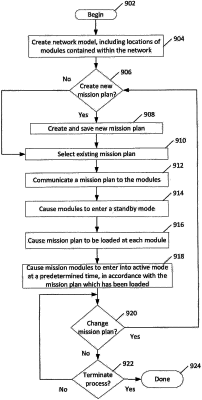| CPC H04L 41/147 (2013.01) [G06N 5/02 (2013.01); H04L 41/046 (2013.01); H04L 43/04 (2013.01)] | 20 Claims |

|
1. A method for controlling operations of a computer system, comprising:
collecting, by at least one computing device of the computer system, information about events occurring in the computer system;
performing automated ontogenesis operations by the at least one computing device using the collected information to
determine a context of a given situation associated with the computer system using the stored ontogenetic knowledge,
define parameters for a plurality of different sets of actions that could occur in the context of the given situation,
select a data type from a plurality of different data types based on a total number of previous occurrences of a particular action and a time of a most recent occurrence of the particular action, the plurality of different data types comprising previously used simulation set values, raw data associated with the previous occurrences of the particular action, and a pre-defined range of values,
use data of the selected data type to generate new simulation set values,
simulate the different sets of actions using the new simulation set values to generate a plurality of predicted consequences resulting from the performance of certain behaviors by nodes of the computer system in the context of the given situation,
observe behaviors of a person,
obtain at least one inferred characteristic of the person from the behaviors of the person which were observed, the at least one inferred characteristic indicating an intelligence or a technological capability of the person,
use the at least one inferred characteristic to determine whether the person is likely to respond to a behavior associated with at least one of the plurality of predicted consequences, and
select a first predicted consequence from the plurality of predicted consequences that is associated with the behavior to which the person is likely to respond; and
using the parameters of the first predicted consequence to control operations of the computer system.
|